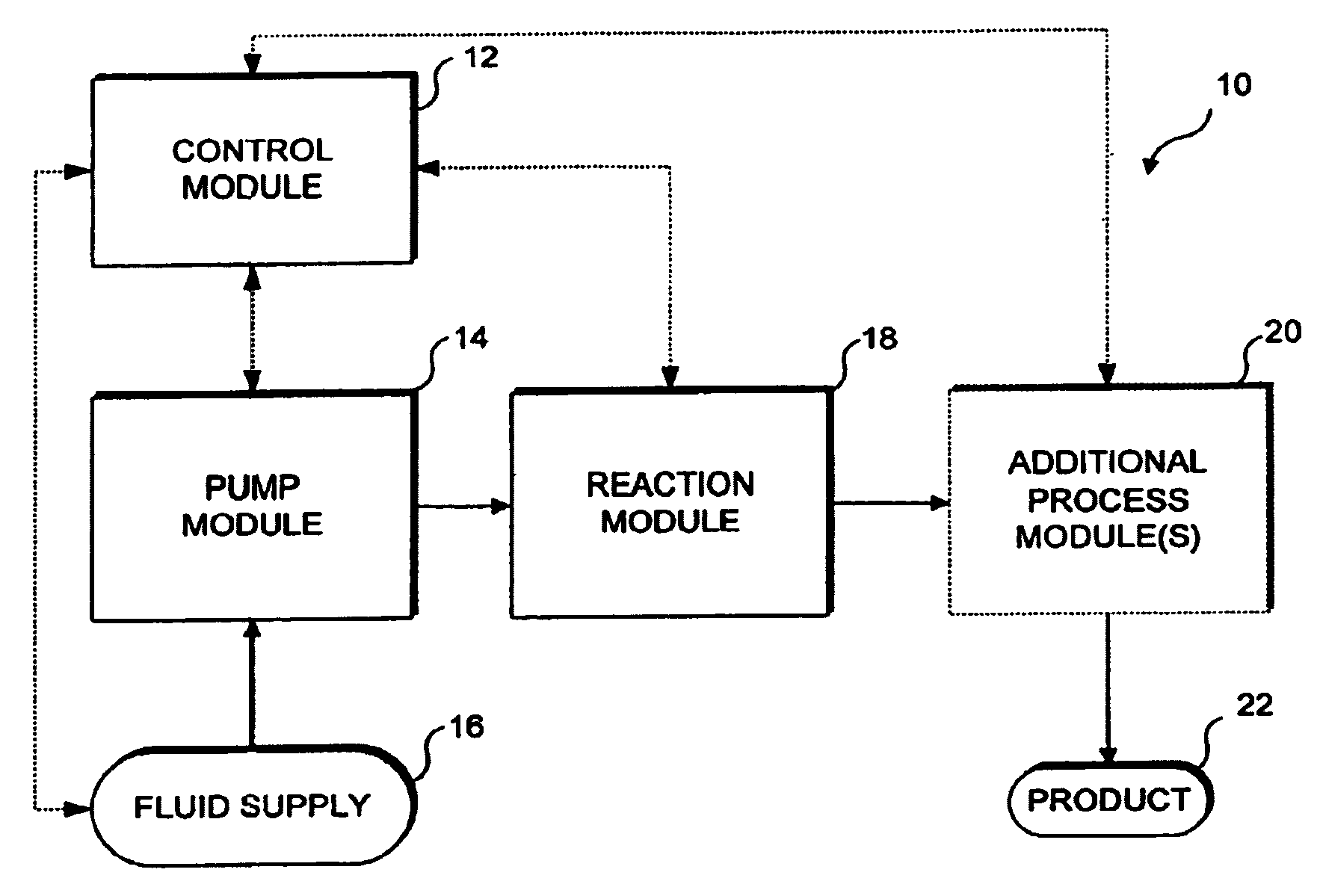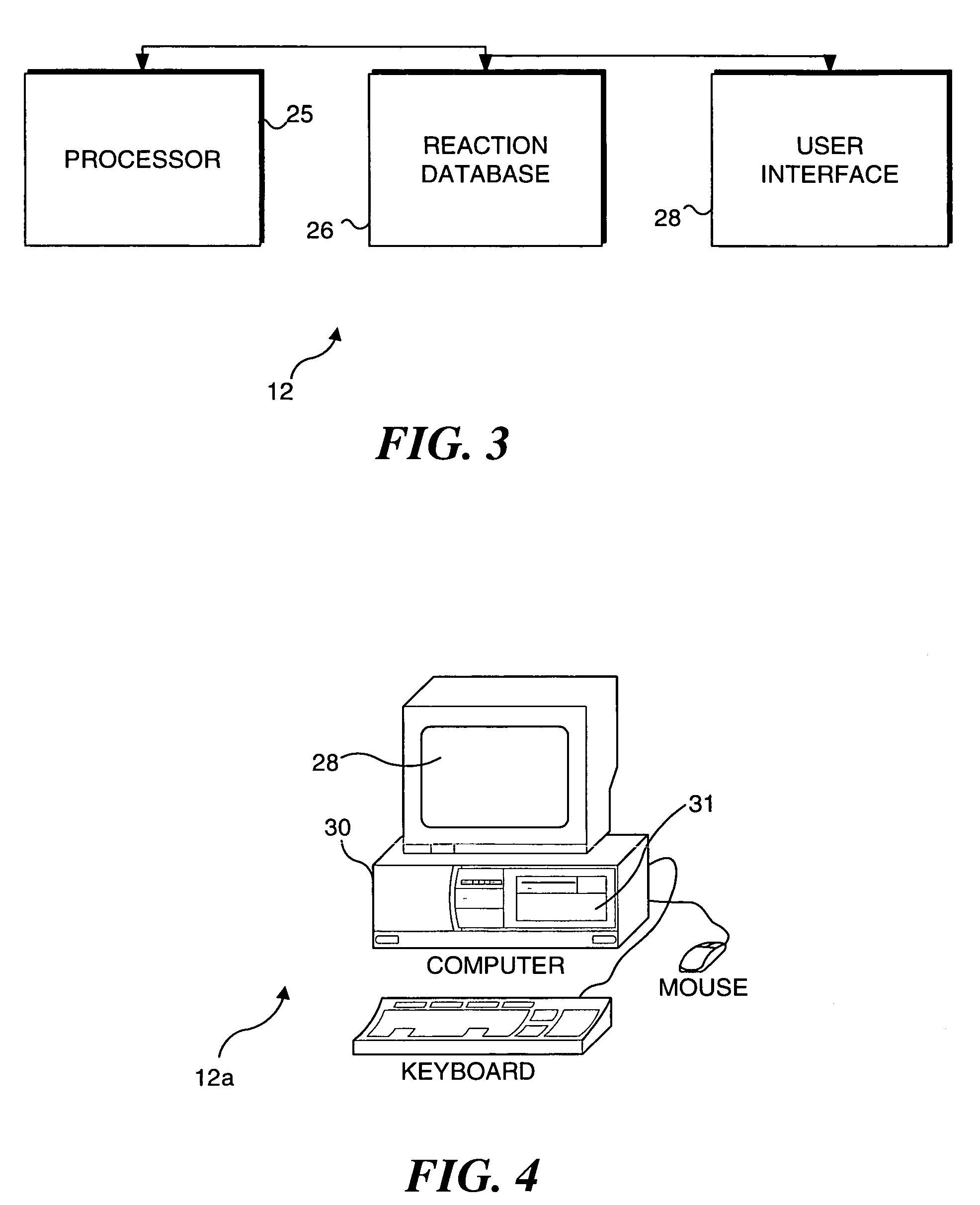Modular chemical production system incorporating a microreactor
a chemical production system and microreactor technology, applied in the direction of liquid-gas reaction of thin-film type, gas-gas reaction process, instruments, etc., can solve the problems of frustrating and expensive delays in moving from research to production, the control of chemical processes within very small reactors is much simpler than in the laboratory, and the chemical production process perfected in the laboratory using small volumes of chemicals often requires considerable modifications in the process. achieve the effect of facilitating the completion of a different chemical reaction, facilitating th
- Summary
- Abstract
- Description
- Claims
- Application Information
AI Technical Summary
Benefits of technology
Problems solved by technology
Method used
Image
Examples
Embodiment Construction
[0060]In accord with the present invention, a modular system is defined for producing a chemical product from a plurality of reactants and includes a plurality of replaceable modular units. A control module enables automated control of parameters such as concentration, flow rates, temperature, pressure, pH values, and residence time. The system is configured for continuous operation and in its simplest form, can be used in chemical research facilities for the continuous production of small volumes of specialty chemicals required for research applications. Individual modules can be replaced to modify the performance of the system, and reaction modules can be replaced with reaction modules having a different configuration to enable the completion of different classes or types of reactions. Furthermore, a single reaction module is preferably capable of facilitating a plurality of processes relating to the production of a desired product from a plurality of reagents, and the system enab...
PUM
 Login to View More
Login to View More Abstract
Description
Claims
Application Information
 Login to View More
Login to View More - R&D
- Intellectual Property
- Life Sciences
- Materials
- Tech Scout
- Unparalleled Data Quality
- Higher Quality Content
- 60% Fewer Hallucinations
Browse by: Latest US Patents, China's latest patents, Technical Efficacy Thesaurus, Application Domain, Technology Topic, Popular Technical Reports.
© 2025 PatSnap. All rights reserved.Legal|Privacy policy|Modern Slavery Act Transparency Statement|Sitemap|About US| Contact US: help@patsnap.com



